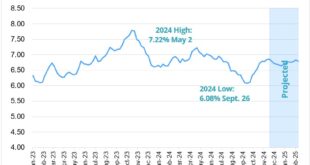Mortgage Loan Process: Guide to Homeownership. Buying a home is an exciting milestone, but securing a mortgage loan can be complex. Understanding the mortgage loan process can help you navigate it smoothly and avoid common pitfalls. This guide will walk you through each step, ensuring you are well-prepared for homeownership.
Understanding the Mortgage Loan Process
The mortgage loan process consists of several crucial steps, from pre-approval to closing. Here’s how it works:
1. Pre-Approval
Before you start house hunting, getting pre-approved for a mortgage is essential. A lender evaluates your financial situation, including credit score, income, debt-to-income ratio, and employment history. Pre-approval provides a clear budget and demonstrates to sellers that you are a serious buyer.
2. House Hunting and Making an Offer
Once pre-approved, you can start looking for a home within your budget. When you find the right property, you will submit an offer. If the seller accepts, you move forward with the mortgage process.
3. Mortgage Loan Application
After the seller accepts your offer, you formally apply for a mortgage. The lender will require documentation, including:
- Proof of income (pay stubs, tax returns)
- Bank statements
- Credit history
- Employment verification
4. Loan Processing and Underwriting
The lender will review your application and supporting documents. The underwriting process determines your eligibility by assessing risk factors such as:
- Debt-to-income ratio
- Creditworthiness
- Employment stability
If the underwriter identifies any issues, they may request additional documents or clarifications.
5. Home Appraisal and Inspection
A home appraisal ensures the property’s value matches the loan amount. Additionally, a home inspection checks for structural or maintenance issues that may affect the property’s worth.
6. Loan Approval and Closing Disclosure
Once underwriting is complete, the lender issues a loan approval. A Closing Disclosure outlines final loan terms, including interest rates, monthly payments, and closing costs.
7. Final Walkthrough and Closing
Before closing, you perform a final walkthrough to ensure the property is in the agreed condition. At closing, you sign the mortgage agreement, pay closing costs, and receive the keys to your new home.
10 Tips for a Smooth Mortgage Loan Process
- Check your credit score before applying.
- Save for a down payment and closing costs.
- Get pre-approved before house hunting.
- Avoid making major purchases before closing.
- Work with an experienced real estate agent.
- Compare mortgage lenders for the best rates.
- Gather necessary documents early.
- Maintain job stability throughout the process.
- Ask questions if you don’t understand terms.
- Be prepared for unexpected expenses.
10 Frequently Asked Questions (FAQs)
1. What is the minimum credit score for a mortgage? Most lenders require a score of at least 620, but FHA loans may allow lower scores.
2. How much down payment do I need? It depends on the loan type. Conventional loans typically require 5-20%, while FHA loans need as little as 3.5%.
3. What is PMI? Private Mortgage Insurance (PMI) protects lenders when the down payment is less than 20%.
4. How long does the mortgage loan process take? On average, it takes 30-45 days from application to closing.
5. Can I get a mortgage with student loan debt? Yes, but lenders will assess your debt-to-income ratio to determine eligibility.
6. What factors affect my mortgage interest rate? Your credit score, loan amount, down payment, and market conditions influence interest rates.
7. Should I choose a fixed or adjustable-rate mortgage? Fixed-rate mortgages offer stability, while adjustable-rate mortgages may have lower initial rates.
8. What are closing costs? Closing costs include fees for appraisal, title insurance, and lender services, typically 2-5% of the home price.
9. Can I negotiate my mortgage rate? Yes, shopping around and negotiating can help you secure better rates and terms.
10. What happens if my loan is denied? Lenders will provide reasons for denial. You may need to improve credit, reduce debt, or find a different loan option.
Conclusion
The mortgage loan process may seem daunting, but understanding each step can make it more manageable. From pre-approval to closing, preparation is key to securing a favorable loan. By improving your credit score, saving for a down payment, and staying informed, you can navigate the process confidently and achieve your dream of homeownership.
 mortgage.kbk.news
mortgage.kbk.news
